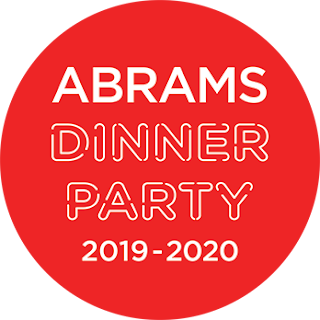Review & Author Guest Post: Fallen Beauty by Erika Robuck
 Fallen Beauty
is Erika Robuck's third novel about a writer from the 1920s. This time
she takes us to upstate New York, where the poet Edna St. Vincent Millay
meets Laura Kelley, a small-town seamstress.
Fallen Beauty
is Erika Robuck's third novel about a writer from the 1920s. This time
she takes us to upstate New York, where the poet Edna St. Vincent Millay
meets Laura Kelley, a small-town seamstress.
Laura is
living with the results of one night of recklessness with an unavailable
man. She has bravely decided to raise their daughter alone, despite
being the subject of her neighbors' gossip. Meanwhile, the scandalous
poet Edna St. Vincent Millay, who has a house nearby, has her own
reputation to flaunt or repair, as the situation warrants. Do the two
women have more in common than it seems?
The novel
switches seamlessly and quickly between the voices of Laura and Vincent
(as the poet is called), so we are made aware of their thoughts as well
as their actions. Robuck infuses the novel with great Jazz Age details
and explores what happens to two very different women when they dare to
defy social expectations.
Because Fallen Beauty
gives us so much to think about, I think it'd be terrific book club
pick. Themes and discussion topics include love, independence, social
norms, marriage, morals, small-town life, being true to oneself,
sisters, and facing the realities of the choices we make. I didn't know
much about Edna St. Vincent Millay, but now that I have a better idea of
the kind of person she was, I want to reread her poetry.
Guest Post. Way back when Erika Robuck's first book, Hemingway's Girl,
was just coming out, I met her in the green room at BEA. We were both
waiting to be called to the stage for different panels. We had only a
couple of minutes to introduce ourselves and exchange a few words, but I
haven't forgotten how friendly and approachable Erika is. Please help
me welcome her to Beth Fish Reads; I'm sure you'll enjoy her fun and
informative guest post. What do you know about one of the most popular
drinks of the Roaring Twenties?
Thanks so much, Erika. I love this story. I'm sure I would be quite fallen after that Green Fairy. And I can see how it became a symbol of the Lost Generation. Now I need to find a designated driver and go out and sample my own absinthe cocktail.Absinthe by Erika Robuck
After the first glass, you see things as you wish they were. After the second, you see things as they are not. Finally, you see things as they really are, and that is the most horrible thing in the world.—Oscar Wilde
Absinthe. Wormwood. The Green Fairy.
Rumors of hallucination and poisoning have surrounded this emerald drink since Oscar Wilde said it made him see flowers growing in cafés, but in truth, it is simply very strong alcohol—over one hundred proof—and has been legal in the United States since 2007.
While many debate whether or not the absinthe one may now procure is authentic, I can tell you from experience that it is quite potent and delightful.
As a writer writing about writers from the 1920s, I made it my business to find out what all the fuss was about. One evening, I met a fellow writer for dinner at a café on Maryland’s Eastern Shore, which we did not know before our arrival had a Hemingway theme, but felt certain afterward that he had led us there. (That is how we think.)
Imagine my delight when the menu boasted an extensive collection of absinthe drinks. I had written a detailed scene in Hemingway’s Girl about absinthe consumption, but had not yet partaken myself. I knew Hemingway would want me to authenticate my scene.
I ordered the Green Fairy—the type of absinthe in my book. I watched the waiter light the sugar cube on fire and dissolve it into the alcohol with a shot of water; then I proceeded to sip my cocktail with a salad at dinner.
Absinthe has a distinct flavor, that of anise and herbs. It is not unpleasant, though I cannot imagine drinking it often, and after only a few sips, one can feel the effects in a pronounced way. It didn’t take long for me to look like this [click image to see it full size]:
Needless to say, I switched to water after only one glass, and had someone drive me home.
It is good I experienced absinthe, because now I understand my characters better, and the drink has shown up in my subsequent novels, Call Me Zelda and Fallen Beauty. The creatives of the Lost Generation drank it plentifully, and while it may not have led them to madness, alcoholism, or suicide directly, what it represented at the time—a break from convention, pushing the limits, a gateway drug—certainly set them on a path.
Absinthe is called the Green Fairy for good reason, and a little goes a long way. If you want to dip a toe in the waters, I encourage the experience in isolation. Just make sure you have a ride home.
ISBN-13: 9780451418906
Copyright © cbl for Beth Fish Reads, all rights reserved (see review policy). Click for more













































